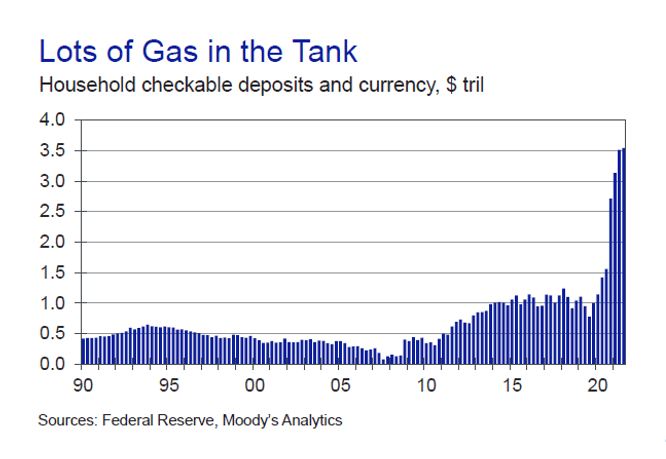by Ishara Nanayakkara
—
In March, Moody’s released an analysis of the ways global events affect state and local economies, especially in terms of tax revenue. Much of the following information relies on that analysis (“Ukraine, Russia, and State & Local Budget,” by Dan White).
Since the COVID-19 pandemic began, state and local governments have received federal assistance in the billions of dollars. Pandemic relief increased the portion of state government revenue coming from federal dollars to 36%, the highest level on record. Federal funds were the largest source of revenue in 18 states, up from four states one year ago. This has created a state and local government spending environment at a level almost 10% higher than before the pandemic, the fastest pace of increased spending in over 20 years.
States also are adjusting revenue forecasts in response to uncertainty created by the Russian invasion of Ukraine.
Revenue Forecast
Most states rely heavily on sales taxes for revenue. Since these taxes are generally assessed as a percentage of purchase prices, the high rate of inflation should spur increased tax revenues. Inflation is forecast to raise sales tax collections by over 4%. In particular, states in which economies are driven by energy and agriculture (especially wheat production) will benefit. However, to provide relief to consumers, many states are considering gas tax holidays, which will reduce tax revenue.
Local governments will also see increased property tax revenues due to substantial property value increases in many parts of the country. Tax valuation usually lags market price increases by six to eight quarters, so the rapid rise in property values has not yet been fully reflected in assessed valuations. Experts predict that property values will level off or decrease in 2022, but local governments will reap the benefits of current escalated values for some time. Urban-centered governments are an exception to this prediction. They will likely see a decreased tax base because they are more reliant on commercial real estate, which decreased in value during the pandemic.
Consumer behavior also influences potential gains in tax revenue. Spending habits may change due to increasing prices and a recent interest rate hike by the Federal Reserve. However, household bank balances are currently at the highest level ever recorded due to the stimulus payments sent out over the past two years. This may counteract the downward pressure on spending caused by inflation and interest rate increases.

During the 2022 legislative sessions, policymakers may see the windfall as a one-time occurrence, therefore gravitating toward one-time investments (such as capital infrastructure). But because inflation has increased the cost of such projects (in some cases dramatically), there will be some incentive to use existing funds for recurring projects. “State and local governments are some of the largest consumers in the country,” according to Moody’s, and their spending habits will also be affected. The greatest impact will come from the rising cost of infrastructure and transportation construction projects.
State and Local Government Inputs
Accounting for inflation, net spending is less than 1% higher than it was before the pandemic. Workforce shortages further limit the impact of newly available funds — there are more than 700,000 vacant government jobs at the state and local levels. This is the “lowest number of state and local government employees in the U.S. since 1986,” adjusting for population, as states have only been able to regain half the jobs lost during the pandemic. In the past 12 months, approximately three million employees have left their public sector jobs, and resignation rates remain at record highs. This quandary exists in an environment where the labor market is very tight, with unemployment rates well below 4%. Inflation and rising prices exacerbate the challenge of public sector hiring as wages are usually lower than private sector roles. Baseline forecasts predict that this will hinder “government payrolls from regaining pre-pandemic levels” for several years.
Uncertainty
As a result of these uncertain times, a variety of factors remain undetermined. Due to rising incomes during the pandemic, income tax payments in 2022 are expected to be significantly higher and withholding is expected to expand, but this boost may be mitigated by potentially slower levels of hiring in the coming months.
The impact of capital markets is harder to predict. According to Moody’s, “Most major U.S. equity indexes have already entered correction territory,” which occurs when an index drops from 10 to 20% after a recent peak. Events in Europe will complicate market behavior, potentially for several months or years. If reduced production of consumer goods in Ukraine and Russia continues and economic sanctions remain in place for an extended period, the “outlook for the U.S. economy and subsequently state and local government fiscal conditions could be much darker.”